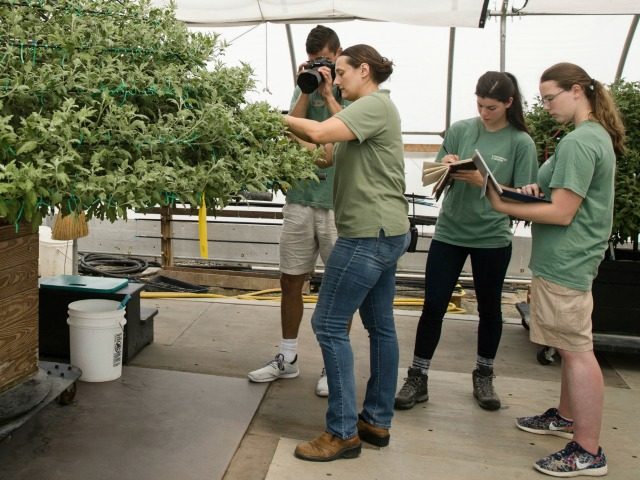President Donald Trump’s “Hire American” economy is pressuring companies to raise wages for interns, create intern programs, and open up intern slots to middle-ranking students, says a report by the Wall Street Journal.
Wages are rising, the newspaper reported July 2:
The average hourly internship wage rose 3.7% in 2018 to $18.73, according to NACE. In 2014, the average hourly wage for an intern was about $16.
Companies are creating internships to help them compete for workers:
Cape Cod Five Cents Savings Bank in Harwich Port, Mass., built a paid intern program last year to attract college students and create a pipeline of young talent. Laura Newstead, a senior vice president and chief human resources officer, said recruiting local college students and graduates to stay in Cape Cod can be challenging because most of them want to go off to Boston or New York. Four of the bank’s previous paid summer interns returned after graduating to work full-time. Ms. Newstead is planning to offer full-time jobs to about 10 of the students in the current summer intern class, which would start after they graduate next year.
Internships are going to students with less than stellar grades, the paper reported:
“A company that could afford to get an ‘A’ player are probably happy with a ‘B’ player,” said Tony Lee, vice president of editorial and overseas talent acquisition at the Society for Human Resource Management, a membership association. “A position might be sitting open for four months, and if that means dropping the standards a bit, so be it.”
The new deal for interns is aided by a Trump policy which is intended to prevent companies from using interns to replace full-time workers, the newspaper said. The guidelines were posted by the U.S. Department of Labor in January.
The good news reflects the broader pressure on employers to compete for workers in an economy where Trump has blocked companies from importing extra workers via a ‘DACA’ amnesty, refugee programs or the asylum the system.
Employers are under intense pressure from consumers and investors to minimize pay raises for their established workforces. This means that many of the extra wages and benefits visible so far are going to the employees who are willing to switch jobs frequently and to the new recruits from formerly sidelined populations.
The current beneficiaries include new hires and employees in high-turnover jobs, such as Latino restaurant workers in Monterey, Calif., resort workers in Hilton Head, construction workers, and Superbowl workers, and workers at small businesses.
The benefits are also going to formerly sidelined workers, such as African-American bakers in Chicago, disabled people nationwide, high schoolers, and the garment industry.
But long-term, high-skill workers — including Warren Buffett’s railroad workers — will gain as the pressure spreads throughout the economy. The core group of stable employees has already gained from the tax cuts and may see their wage gains accelerate during the rest of 2018 even as inflation rises above 2 percent.
The Washington-imposed economic policy of economic growth via immigration shifts wealth from young people towards older people by flooding the market with cheap foreign labor. That process spikes profits and Wall Street values by cutting salaries for manual and skilled labor offered by blue-collar and white-collar employees. The policy also drives up real estate prices, widens wealth-gaps, reduces high-tech investment, increases state and local tax burdens, hurts kids’ schools and college education, pushes Americans away from high-tech careers, and sidelines at least 5 million marginalized Americans and their families, including many who are now struggling with opioid addictions.
Democrats want more immigrants because they expect the immigrants will vote for big-government progressive policies. Business groups — including those with close ties to the GOP — want more immigration because it helps investors by cutting wages, boosting consumption, and spiking real-estate prices. In practice, the federal government’s immigration policy inflates the supply of labor — and so reduces the cost of labor — to help boost company sales and investors’ returns.

COMMENTS
Please let us know if you're having issues with commenting.